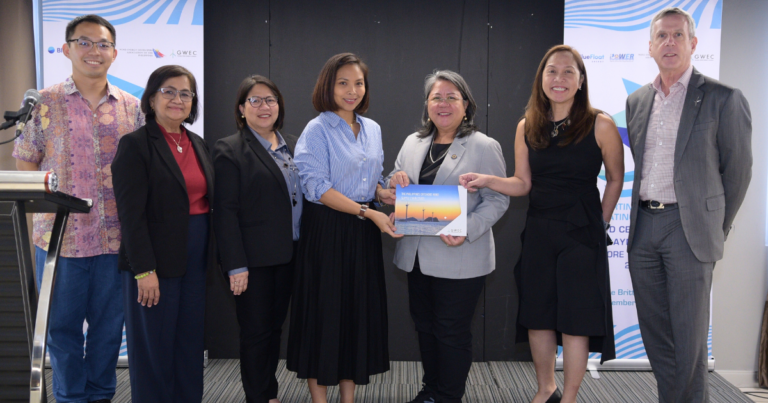11 December 2024, Manila | The Global Wind Energy Council (GWEC) launched its first country-focused offshore wind supply chain analysis titled The Philippines Offshore Wind Supply Chain Study in Manila today. The launch was held at a year-end gathering of leaders, innovators, and wind power advocates to celebrate the Philippine wind energy sector’s wins over the past year.
The GWEC report dives deep into the Philippines’ wind energy supply chain, identifying strengths and opportunities across three key sectors: shipbuilding, skilled labour, and critical minerals, with a focus on transmission cables and steel production. Findings from the study show great business opportunities for the Philippines to tap on its strengths by scaling up or pivoting these sectors to support offshore wind development both domestically and across the region.
As an emerging market in the Asia Pacific region, the Philippines holds significant potential for clean and secure offshore wind energy. The Department of Energy of the Philippines (DOE) anticipates an increase of 19 to 50 GW in offshore wind capacity by 2050, drawing from the currently awarded offshore wind service contracts totalling 67.26 GW.
Ann Margret Francisco, Philippines Country Manager at GWEC said, “The Philippines is off to a good start with the government showing a strong political will in developing its offshore wind market. However, for the Philippines to fully capitalise on these offshore wind opportunities, the government needs to refine existing policies and scale up its local supply chain.”
“If we look at the accelerated offshore development scenario – one that is driven by strong policies, high industry engagement, and favourable economic conditions – we can expect 8.5 GW of offshore wind to be built by 2034 in the Philippines. GWEC has been working closely with key government agencies, local associations and other stakeholders on advancing critical policy workstreams that can create a supportive ecosystem for offshore wind development that not only attracts investments but also ensures long-term viability and competitiveness.”
The new GWEC report offers four key recommendations for the Philippine government focused on policies that will support the growing national offshore wind industry while ensuring Philippines suppliers can compete for local and regional offshore wind projects.
Additionally, the report offers strategic recommendations for policymakers aimed at transforming targets into tangible turbine projects. It outlines the necessary steps to establish a dependable, competitive, and resilient offshore wind market in the Philippines, thereby contributing to the broader energy transition across the Asia-Pacific region and beyond.
Raimond Dasalla, Philippine Expert Consultant at ERM said, “For the supply chain to expand effectively, suppliers will need to undertake substantial investments that depend on reliable markets, dedicated project pipelines, and access to a regional marketplace. Concurrently, the government must enhance current incentives to attract supply chain participants and invest in capacity-building efforts.”
“The Philippines is well-positioned to harness its vast renewable energy potential. A sustained, robust commitment from the government, utilizing a comprehensive approach, is precisely what the industry requires to fully realize the country’s significant offshore wind opportunities.”
Despite record-breaking wind capacity growth in recent years, the effort to triple renewable energy by 2030 is falling short. Wind energy is lagging and given its position as the most efficient technology for displacing carbon per megawatt due to its strong capacity factors, this jeopardizes global climate and energy objectives, complicating the energy transition.
The APAC region is the world’s largest wind market, but the supply chain concentration risk is high. Excluding China, the region is unlikely to meet the level of wind power installation required to meet climate targets. Key to closing the gap is political commitment and cooperation which scales up the local supply chain to unlock the growth potential in the APAC region.
As offshore wind installation accelerates in APAC, the Philippines is well positioned to supply the region with skilled workers, shipbuilding, and cables and steels anchoring on the country’s significant critical minerals reserves. This will enable the country to reduce bottlenecks, improve project economics, and accelerate installation of their own offshore wind pipeline using the best available combination of local and domestic suppliers.
A robust domestic supply chain will not only enhance the viability of projects, but also position the country as a competitive player in the global offshore wind market.


1 Comment
Your point of view caught my eye and was very interesting. Thanks. I have a question for you. https://accounts.binance.com/pl/register?ref=YY80CKRN